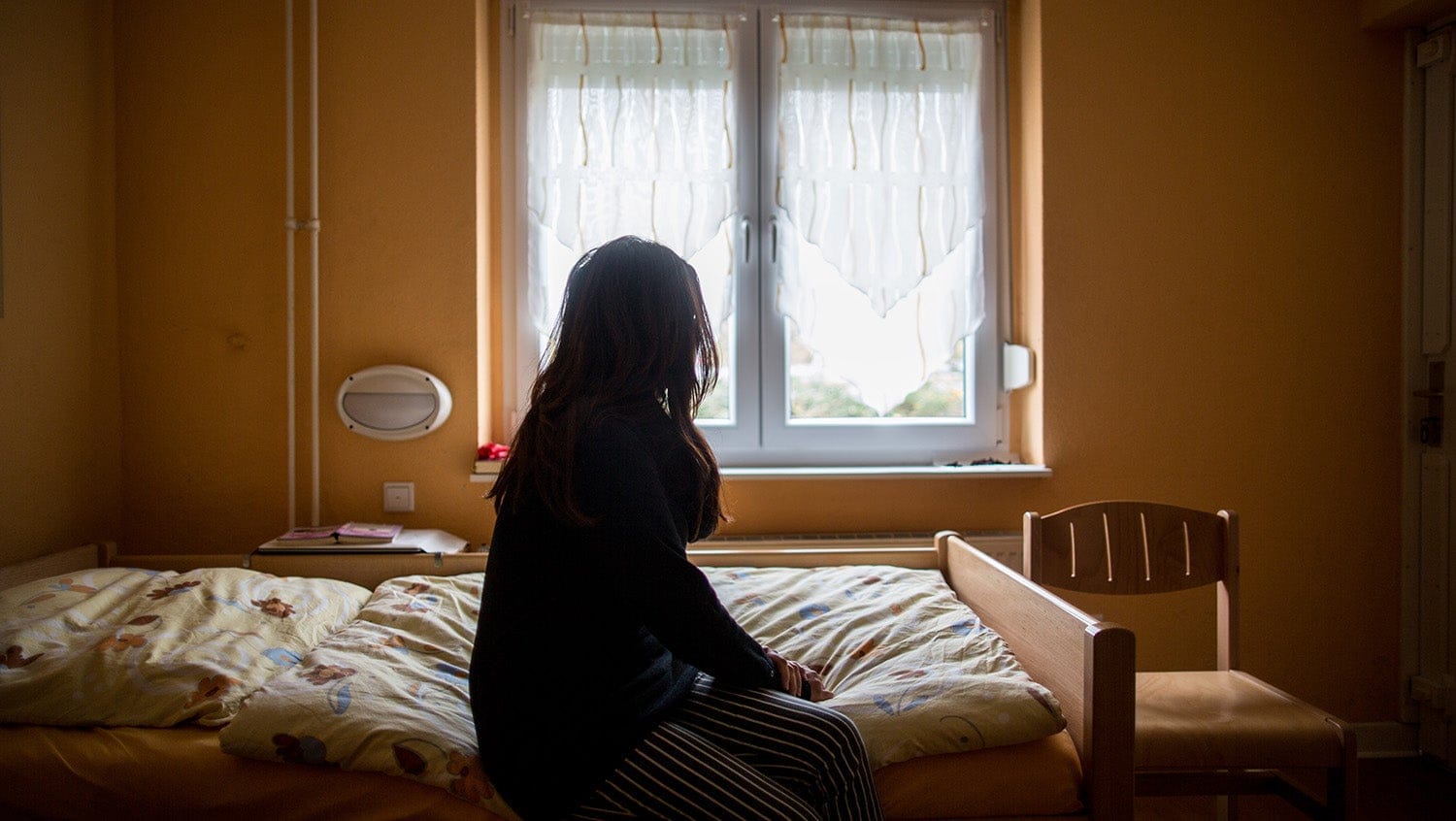Inequities in Sleep Disorder Treatment Perpetuate Health Disparities
May 13, 2021

Picture Alliance, Getty Images
Low-income patients are more likely to see quality sleep as a luxury, not a health concern. Providers must intervene with education, diagnosing, and treatment.
When asked about poor sleep’s impact on overall health, Naina Limbekar, MD, MPH, a sleep neurologist at Boston Medical Center, responded with a simple, all-encompassing message: “If it affects your sleep, it affects your health.”
Because of sleep’s direct relationship with overall health, it’s important to both understand who is living with sleep disorders. Research has shown that people of color are more likely to both get less overall sleep as well as experience extreme sleep durations than white people. There are similar findings about low-income patients, who studies show are more likely to experience short and extreme sleep patterns.
Limbekar spoke with HealthCity about these inequities in sleep health and sleep apnea specifically, the social and environmental determinants of sleep health, and the lack of accessible sleep apnea treatment for low-income patients.
HealthCity: You’ve defined your specialty as a “sleep neurologist.” How is neurology and sleep connected and how does that manifest with your patients?
Naina Limbekar, MD: Many neurological diseases have sleep as an implicating issue, and it’s often the sleep complaint that brings people to the hospital because it’s what they feel most immediately.
For example, people with Parkinson’s disease often have sleep disturbances due to their underlying disease process, and, to further complicate the picture, the medications they take to treat Parkinson’s can often exacerbate sleep difficulties. Another example are patients with multiple sclerosis who commonly experience complex sleep issues that exacerbate their daytime fatigue. People often experience sleep disturbance as early signs of underlying anxiety and depression, and thus treatment of sleep often lends itself as the gateway to treatment of their larger psychiatric conditions as well.
Whether it’s caused by emotional pain, physical pain, neurological disorders, or any other concern, it’s impossible to counsel about sleep health without taking a holistic, lifestyle-centered approach that addresses some of these aforementioned factors.
HC: Outside of a basis in existing neurological disease and other medical history, how does a sleep disorder itself impact a patient’s health?
NL: There is a vast array of medical concerns that people are at risk for just on the basis of their sleeping. According to longitudinal epidemiological studies, the happy number is about 7 hours of sleep per night in order to protect oneself from the risk of unwanted health outcomes. People with less than 6 hours of sleep or more than 9 hours of sleep, when they were followed over time, were at increased risk for, for example, early mortality, cardiovascular complications, dementia, diabetes, hypertension, and mood disorders.
Those are the long-term effects. On the short term, if you get little to no sleep, the next day you’ll likely feel effects on focus, attention, and memory, impaired decision-making, impaired recall, clumsiness, and less empathy.
Plus, there’s a growing area of research that shows that having an inconsistent sleep schedule or performing chronic shift work puts you at risk for a lot of the same long-term effects, due to what’s called circadian misalignment.
Looking at the effects of poor sleep, it becomes a vicious cycle. For example, if you have a poor mood, it affects your sleep quality. And if you have poor sleep, it affects your mood.
HC: What are some of the environmental or social factors that could impact sleep?
NL: There is definitely an underserved population when talking about environmental and social factors that cause poor sleep.
Housing insecurity, living in an area with heightened crime levels and/or high noise levels, and living in an environment where there are many people in one room, such as shelters—all cause poor sleep and insomnia. I also see a lot of patients from low-income housing that have exposure to pollutants in their air environment that cause them allergies at night, worsen their sleep apnea, or more generally cause poor quality of sleep and insomnia.
There’s a growing body of research about rumination and its effect on sleep. People who experience discrimination have high rates of rumination, which is a psychological condition of persistent negative thoughts from constantly re-living their day-to-day experiences. That can cause poor quality of sleep. Relatedly, I also see many people who have experienced high rates of trauma and violence who continue to fear the night, resulting in insomnia.
The COVID-19 pandemic has exacerbated these issues. Black and Hispanic communities have been disproportionately impacted by the pandemic, and concerns of job loss, health, and the trauma of experiencing this pandemic all affect sleep quality.
HC: Based on these sleep inequities, what are you seeing in terms of diagnosing sleep disorders in low-income and marginalized communities?
NL: Good sleep can often seem like a luxury to people who struggle with income, housing, and food insecurity. It’s not considered a primary pillar of their health. As a result, they can underestimate and underreport their sleep symptoms, even though they experience higher burdens of insomnia, poor sleep quality, and daytime symptoms of poor sleep.
I often see patients who don’t complain even though they suffer from sleep concerns. There’s a strong sentiment of “it is what it is.” But it becomes a vicious cycle, putting them at more risk for chronic conditions and poor health outcomes in the long run compared to the general population.
HC: Do these inequities extend to treating sleep disorders?
NL: In addition to barriers in diagnosing these patients due to underreporting and screening, there are often treatment barriers as well. Underserved populations are at risk of higher rates of sleep apnea, due to comorbid conditions such as obesity. However, treatment can be a challenge due to socioeconomic factors, such as lack of insurance.
The first-line treatment for sleep apnea is a piece of durable medical equipment called a continuous positive airway pressure machine, or a CPAP machine, which is a machine with a mask that you wear at night. Less effective methods and second-line treatments include an oral appliance device, and third-line is surgery. There is currently no pharmacological treatment for sleep apnea.
Many of our BMC patients are either uninsured or have a safety net insurance, such as Medicaid Limited, which does not cover CPAP. And so, although I see higher rates of sleep apnea in low-income populations, it often goes untreated because these patients don’t have the means to pay out of pocket for treatment, and that becomes a problem.
Speaking of vicious cycles, when the healthcare system is informing patients that their insurance doesn’t cover first-line treatment, which is well-known in literature to be the most effective, there’s a valid feeling of discrimination. Not only can that cycle impact sleep, but it can lead to patients feeling disheartened, distrustful, and disappointed by the healthcare system.
HC: How can the healthcare industry or policymakers address these inequities in sleep?
NL: Number one, there needs to be an increased awareness that this problem exists. It’s already well-known that not treating sleep apnea puts patients at-risk for chronic health conditions and poor outcomes. So, the next logical step would be to cover CPAP, which is the gold-line, standard treatment for sleep apnea.
The next step would be to understand that underserved populations have higher rates of sleep apnea and are going undiagnosed at a higher rate and untreated at a higher rate. Even when they are diagnosed, they’re less likely to get treatment for many reasons.
There also needs to be a push among clinicians to say that sleep is an integral part of your health—just like what you eat, how you exercise, and how you treat other conditions, for instance, like high blood pressure or cardiovascular disease. There needs to be more community outreach and education about sleep—particularly in these underserved populations. If your sleep is affected, your health is affected, and that there is treatment available if you bring it up to your primary care doctor.
HC: How do sleep medications play a role in treatment for sleep disorders that aren’t sleep apnea?
NL: Taking sleep medications to go to sleep is not the long-term solution. The solution is fixing the underlying issues affecting sleep. It’s not that there isn’t a role for sleep medications in treatment, but if you never treat the underlying problems, these medications will get less and less effective and you get the rise of the issue of polypharmacy.
To address these underlying problems in low-income communities, we need to think of healthcare as a team effort. Primary care providers and sleep clinicians must work with social workers, case managers, and other experts involved to create a holistic approach to the medical and social determinants of sleep health.
This interview has been edited and condensed.


